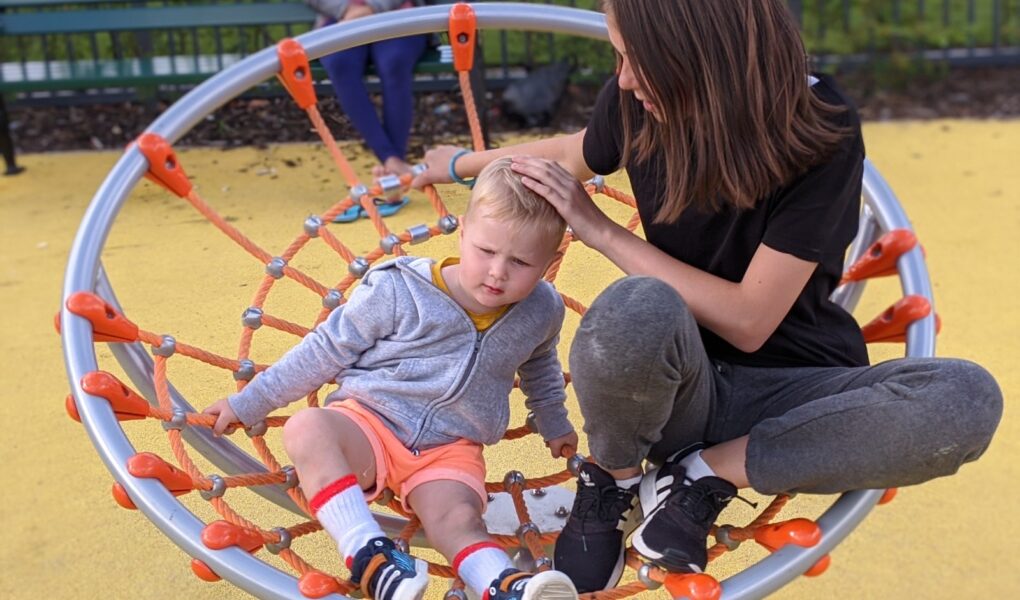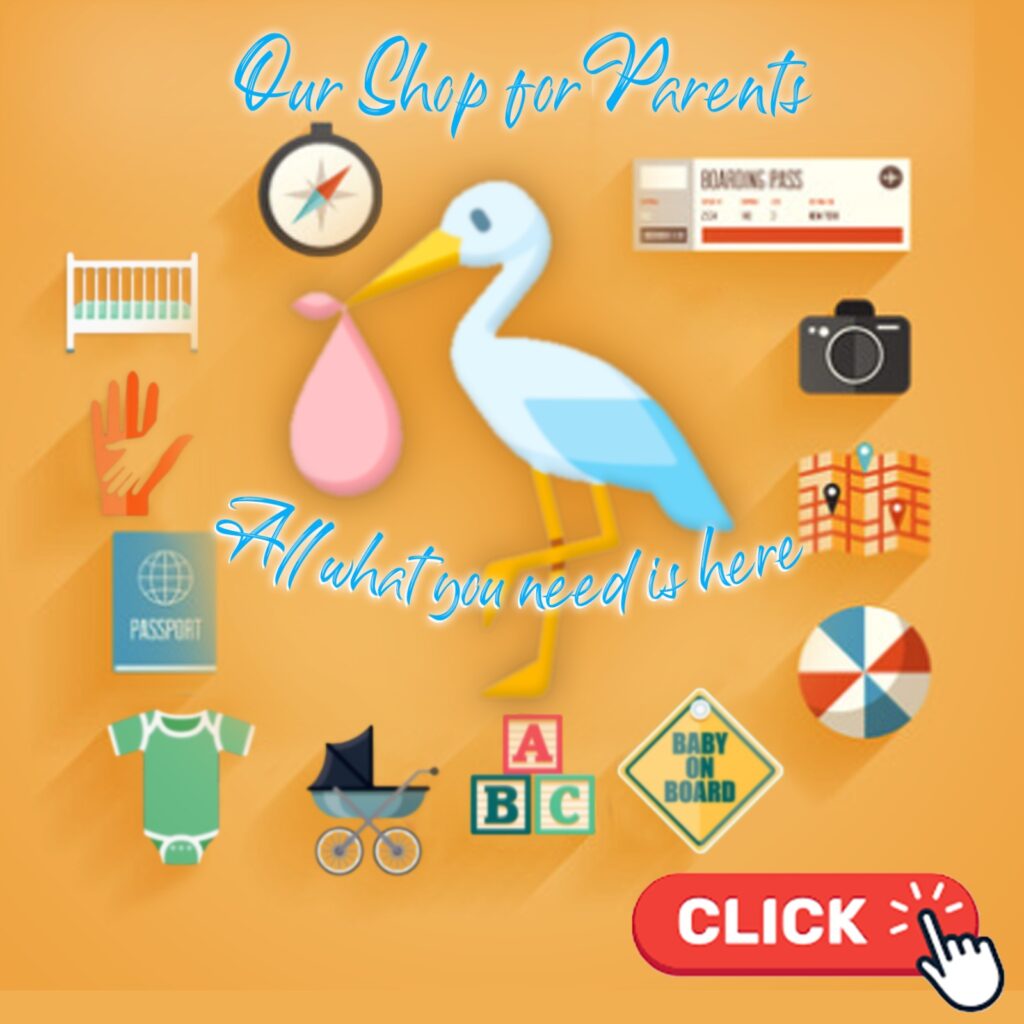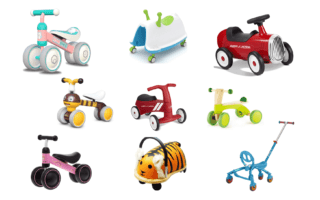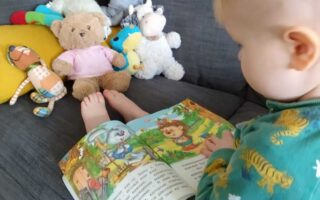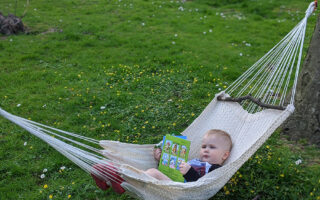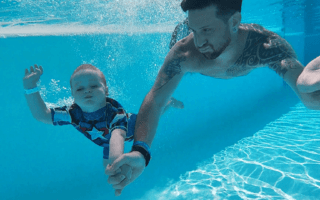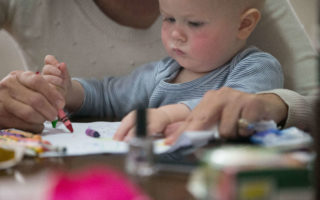When we became parents, we knew we wanted to raise strong-willed, brave, and healthy children. We knew they would fall, but we knew we should not make a big deal out of it as we wanted to pursue all the benefits of risky play.
First step to even starting risky play with your kids is to set your mind right.
If your child falls, don’t scream out loud: “Baby, are you hurt?” as you may frighten them. Once you show this activity may be scary, they may avoid doing this forever or it may lead to traumatic consequences. Instead, run to them as fast as possible, offer support, hug, kiss, and explain that everything is alright. Things like that happen but our main goal is to learn to be safe to avoid such situations as much as possible.
Providing this type of support to your child, you are immediately able to move to a next level – teach your child safety.
It is also important to remember that risky play is not about doing something dangerous. Risk taking and child development are crucial parts of a child’s life. Risky play is more about moving past uncertainty to try something exciting. Although kids love pushing the boundaries, they know their limits; they will not intentionally put themselves in harm’s way.
Researchers have identified six types of risk taking activities for toddlers:
- play at great heights.
- play at high speed.
- play with dangerous tools such as hammers and saws.
- play near dangerous elements such as fire and water.
- rough-and-tumble play, such as climbing over each other, wrestling, rolling around and even pretending to fight.
- play where there’s a chance of getting lost or “disappearing.”
Each of these types of risky play presents some kind of perceived peril that inspires fear in parents.

Benefits of risky play
Introducing risky play or better to say stop avoiding and permitting your child to try risky things has its own benefits. And these benefits of risky play include the following:
- Children take care more of themselves in order not to fall or get hurt when they try risky play. The reason is simple – while they climb trees, they have to rely on themselves; while they play football in a school team, they know there is a coach watching them.
As Dr. Mariana Brussoni of the University of British Columbia points out, statistics show that the likelihood of children having serious injuries through unstructured outdoor play is extremely low. In reality, they’re more likely to need medical attention for injuries sustained in organized sports than play.
- Children learn safety.
Simply because you show them the right way using simple things, riding a skateboard, placing nails in a board using a hammer, conquering the waves in the sea, using the stove, etc., you play an extremely important role in their development, including improving their motor skills and cognitive thinking.
By introducing simple things at start, you are able to supervise and teach them basic safety, let them learn how to take care of themselves, as well as reassure and bring tons of confidence in them.
In other words, risky play helps to develop in your child:
- Adaptability
- Self-confidence
- Emotional regulation
- Physical literacy
- Social skills
Let’s throw couple of examples targeting all six kinds of risky play. Simply remember that you are doing a great job to raise your kids independent, careful, and well fit. You also teach them how to stay away from trouble and strategically plan their next moves.
Remember: kids inevitably will want to try risky play. It’s in our human nature. The most important part is to let them participate in risky play rather than avoid it.
Six types of risky play
Play at great heights
Kids love climbing high on the trees, brick fences, or anything that is high really. What thrills them even more is to jump from these high places. You may have already been asked to hold their hands and help tackle a high border along the street.
Play with heights activities, including elevators and escalators, support and develop children’s vestibular apparatus, as well as help to overcome potential fear of heights.
Other activities may include high bridges, glass floors, or jumping from one stone to another to avoid falling into a river or pond.
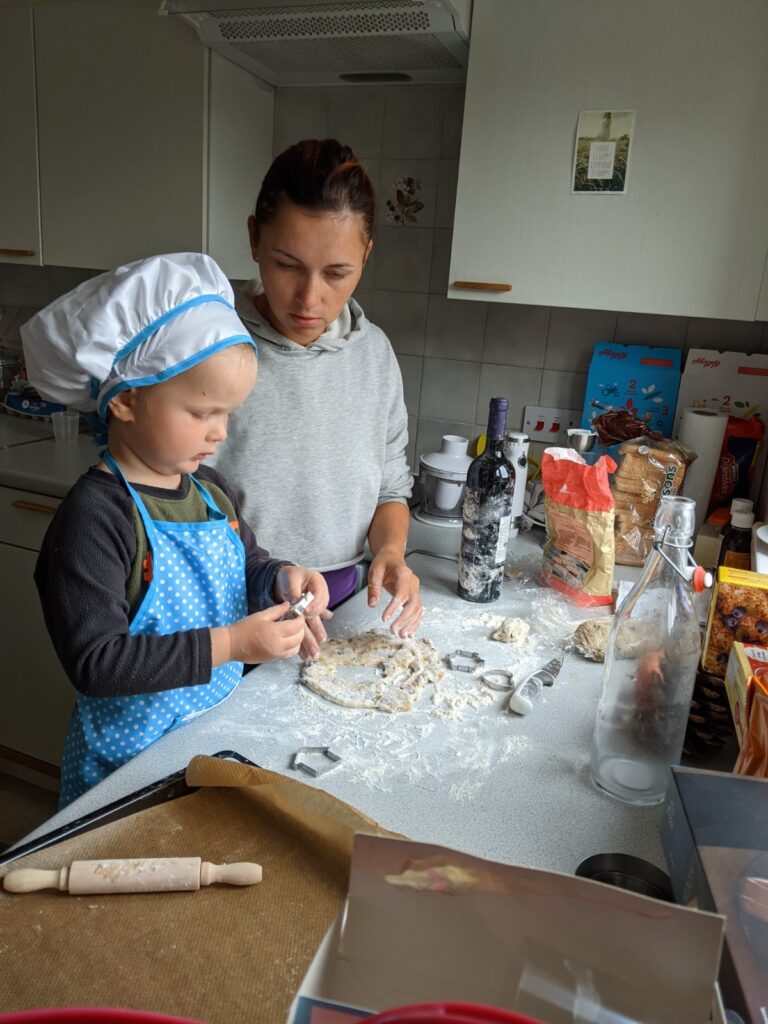
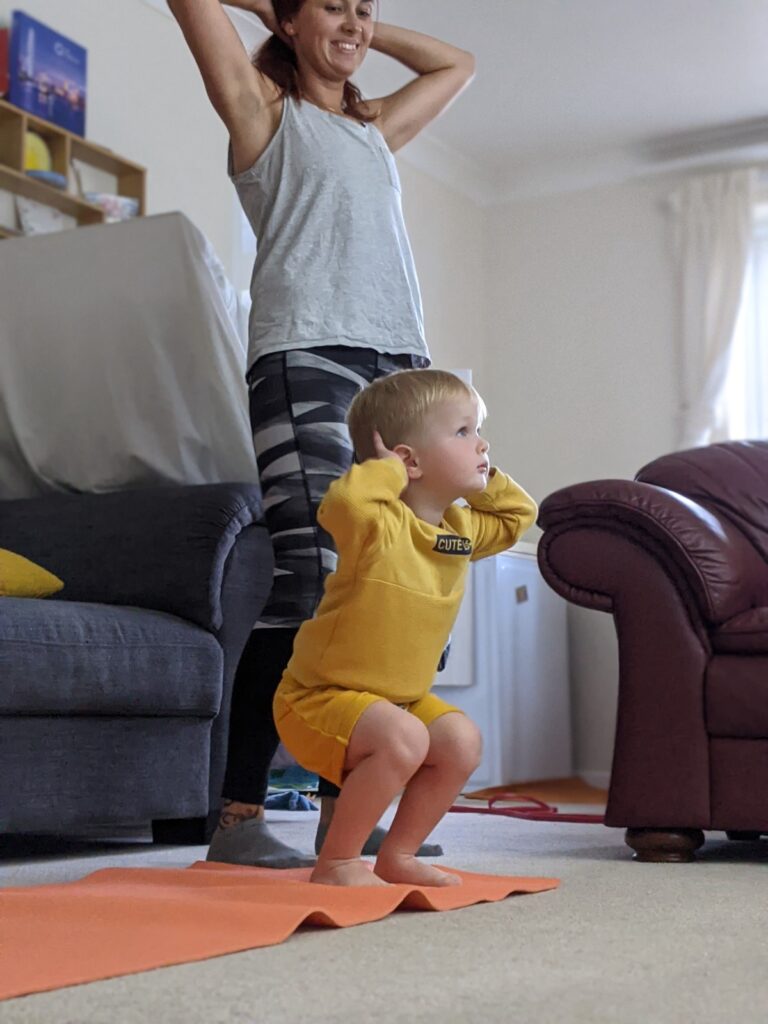
Play at high speed
Speed is enthralling by all means. The majority of superheroes are fast and strong. At school, kids usually pay a great attention to speed games, such as tags. Lots of children will run and do sports that require speed, such as football.
Riding scooters off the hill, bicycles, balance bikes, skateboards, and other transports is another children’s favourite activity. The faster they go, the more risk of falling or bumping into something or someone they have.
Read More:
Play with dangerous tools
This is my favourite actually. In the past, it was taken for granted. Everyone helped their parents build things in the garden. There were school classes and workshops to teach kids how to use tools and utensils. Nowadays, there are lots of policies that target kids’ safety, which makes them unsafe as they don’t know how to use tools which is a necessity in life.
It is important to teach kids how to sew, knit, cook, handle the oven and stove; understand the risks of potential fire, floods, and know where to go, who to call, how to handle the situation calmly and reasonably.
It only benefits your child if you invite them to repair things at home, fix things together, paint walls, build a tree house or birdhouse. It is important to go to the woods and camp, learn some survival skills, know how to use a compass, how to light a fire, build a tent, catch fish.
Read More:
All these skills are extremely helpful to develop logical and critical thinking in your child. You cannot know everything, but by learning basics and understanding how things work, you are able to figure out pretty much everything in life.
Play near dangerous elements
There should not be any fear when playing near dangerous elements, such as at the beach, at the lake, near the firepit, etc. The parent rather should be more attentive and responsible for a child during this time. It is more important to explain how to play around dangerous objects and elements rather than forbid being around and as the result, increase a risk of being hurt by the same elements simply because a child wouldn’t know what to do.
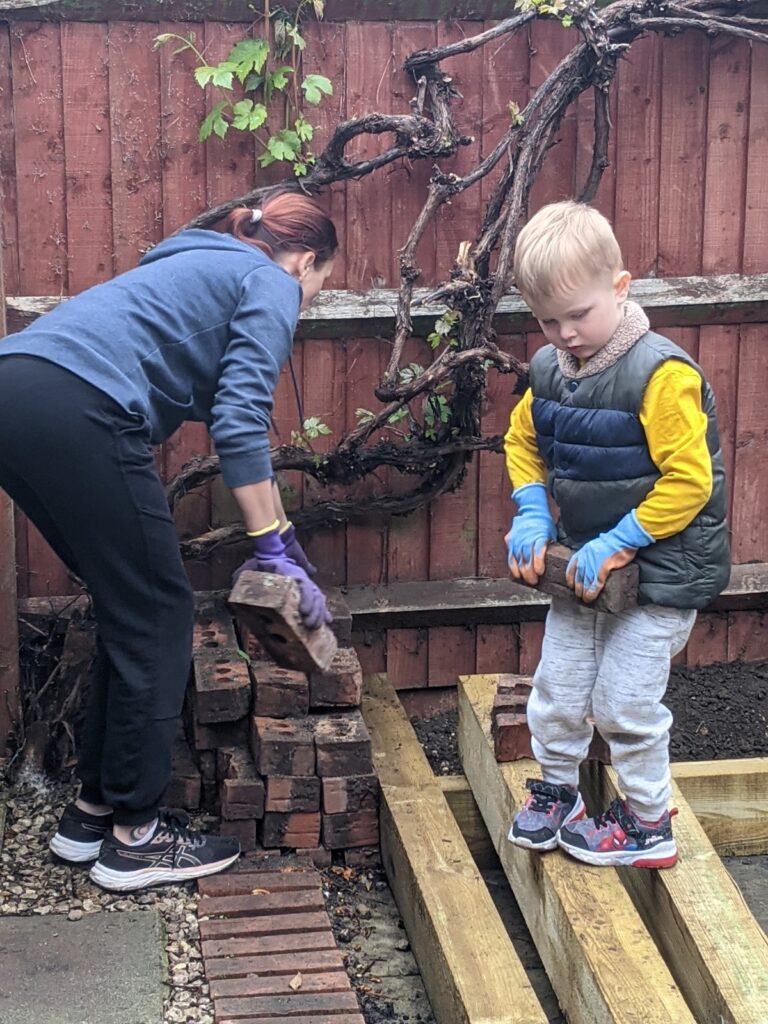
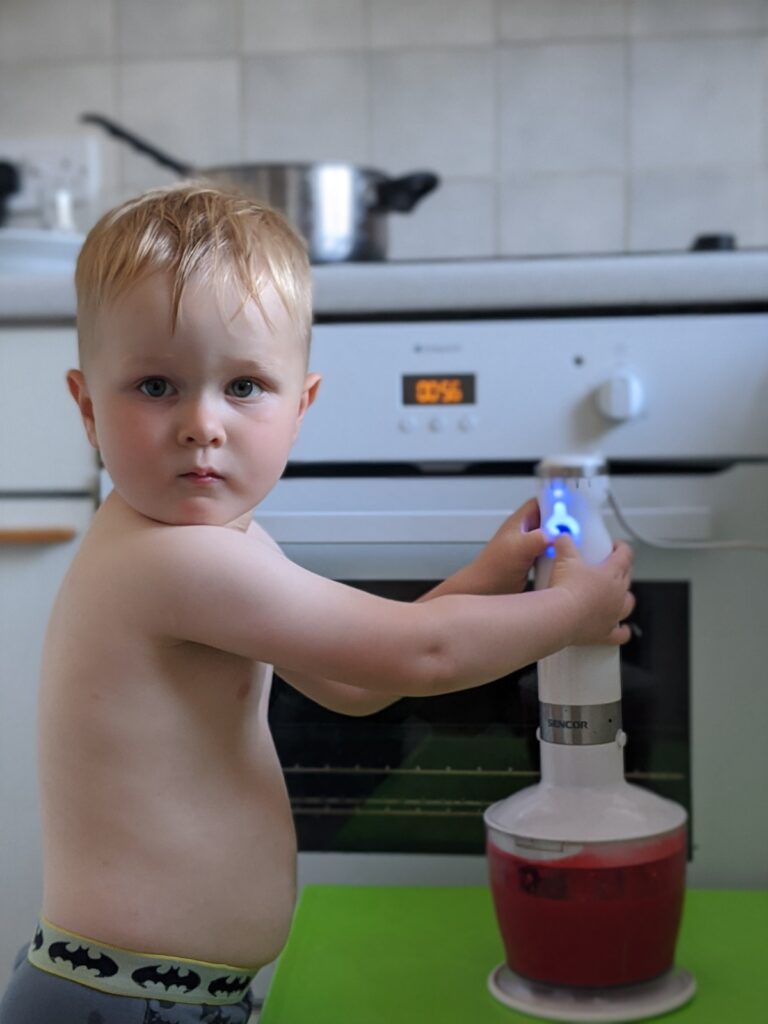
Rough-and-tumble play
Oh, this is my favorite. Rough-and-tumble play, such as climbing over each other, wrestling, rolling around and even pretending to fight is one of the safest and also healthiest way to get all energy and negative emotions out. Psychologists say that through rough play with parents after a hard school day, kids are able to defuse tension and get more relaxed.
Play where there’s a chance of getting lost or “disappearing.”
Finally, do not avoid, in your opinion, scary places. For example, have some walks in the forest, teach your child how to navigate themselves, how to use a compass, what berries and mushrooms can and cannot be eaten, etc.
Go to big malls, busy streets, and crowded markets. But don’t forget to explain how exactly you should all behave, and what should be done if one gets lost. Another good example is to explain the risks of getting into a transport once one is left outside. It is a good idea to agree in advance what happens if the doors of a train, metro, bus, etc. get closed. For example, you could agree that a child should get off the next stop and wait for a parent to come.
Finally, it is important that your child knows the address where he or she lives, your phone number and knows who to seek help from in emergency cases.
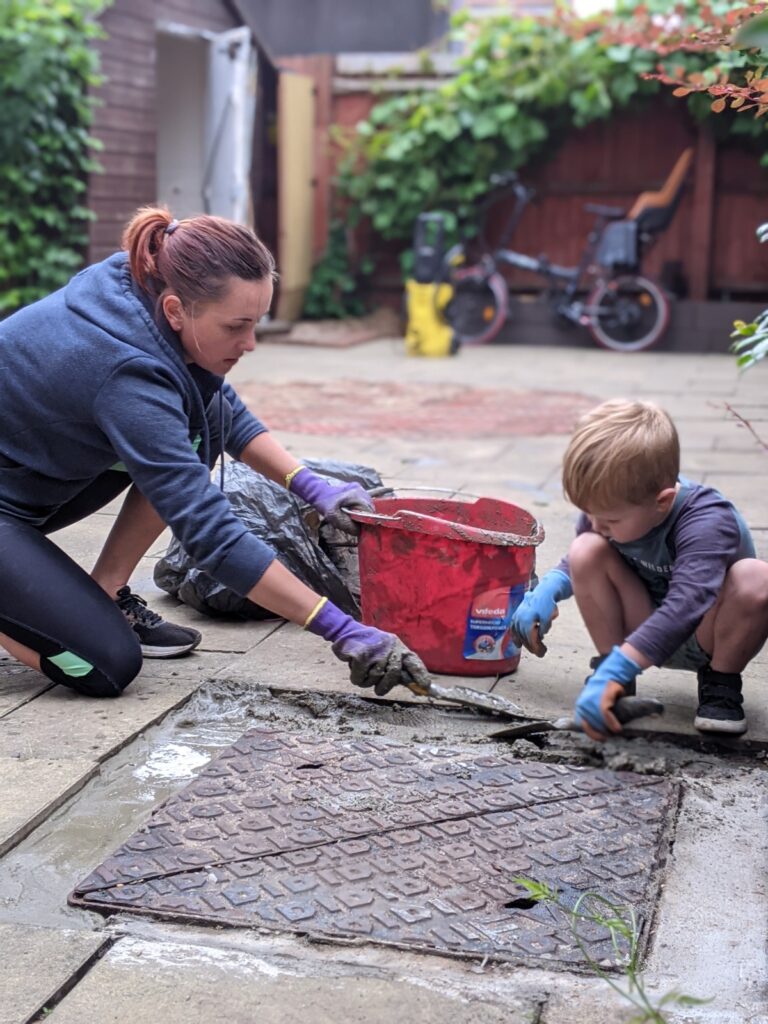
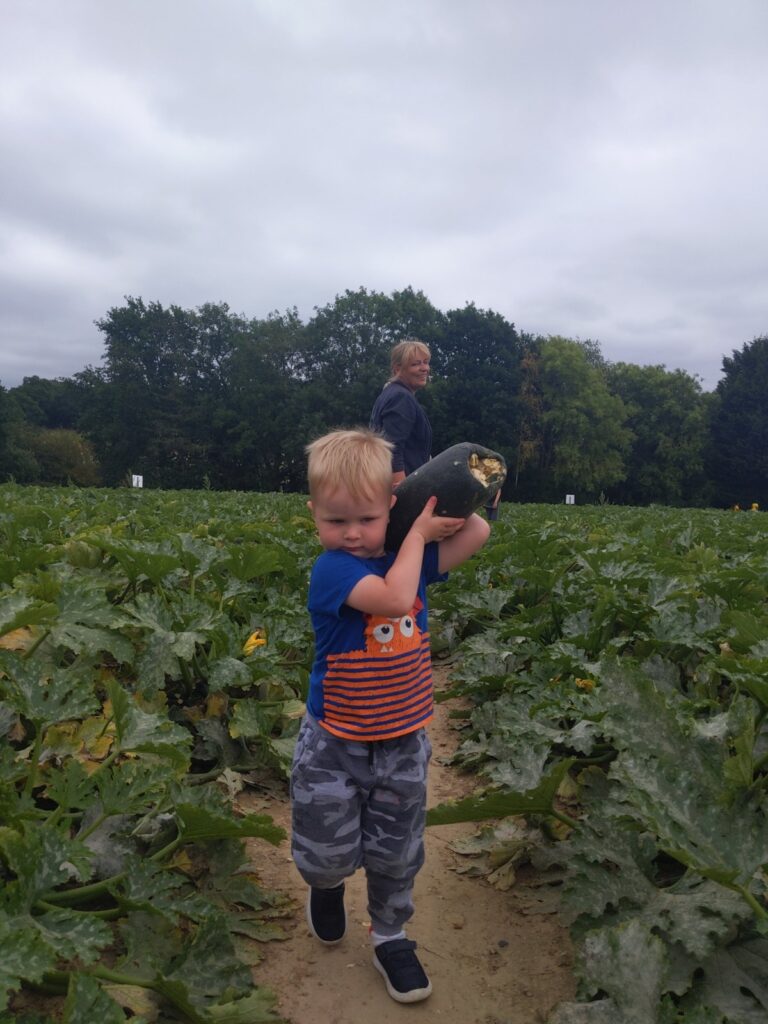
There are tons of benefits of risky play, indeed.
We hope you can share your experience with us. Leave your comment below.
IMPORTANT: We created the Family Store, especially for you. By clicking on the image below you can find anything from Newborn’s First Kit, Baby & Family Essentials, Kids Travel to Travel Gear. We hope you will find something valuable for your own adventures!
Our shop contains products from other companies that we love and use! Everything is based on our values of quality over quantity.
To get more support from parents and family travelers, join our Parenting Support Group.
And follow us on Instagram to know about our crazy expat life!
Also, check out:
Welcome to check out our best product selection for parents and babies, including traveling gear and resources here.
This post may contain affiliate links that we may or may not receive a small commission, at no extra cost to you. This helps to fund our blog but we never advertise for anything we don’t personally love or recommend. There is never any pressure to buy anything, we just like sharing things that make our life easier and help you find them if it is something you are looking for. Please, see our full disclosure here.

